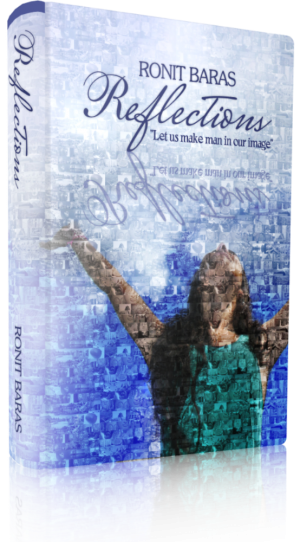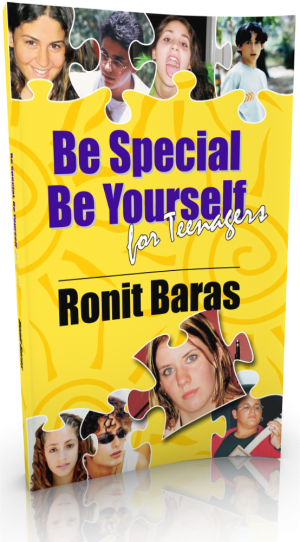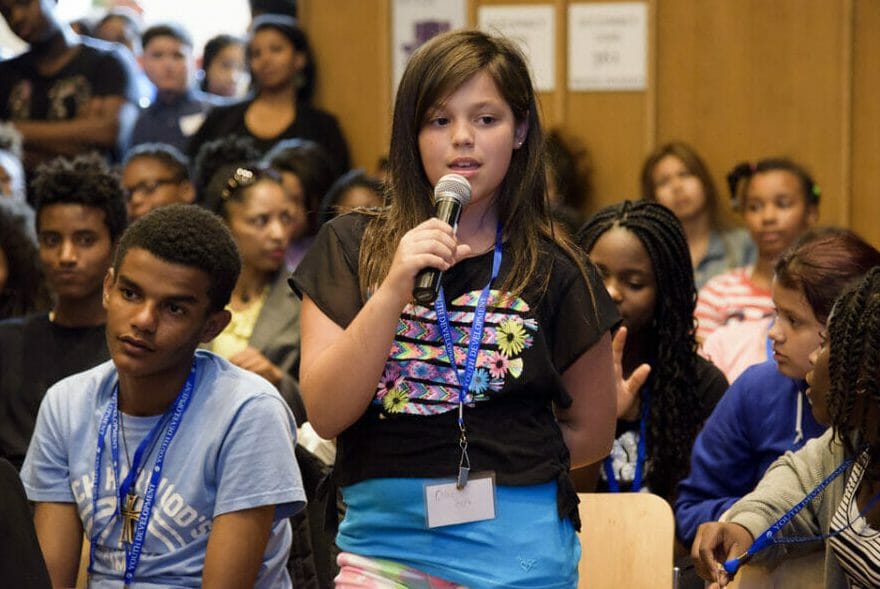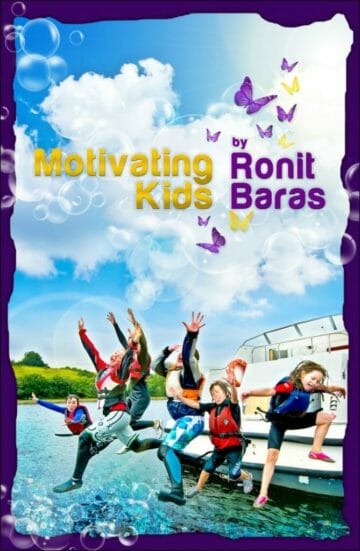 My son Tsoof is now rehearsing a couple of dances for a major performance. As usual, this means I have to drive him, but it also gives me a chance to observe. I noticed he was working hard to get his steps right, but the overall result looked labored and was very unappealing to the audience.
My son Tsoof is now rehearsing a couple of dances for a major performance. As usual, this means I have to drive him, but it also gives me a chance to observe. I noticed he was working hard to get his steps right, but the overall result looked labored and was very unappealing to the audience.
Having sat through many school performances, I vividly remember my agony at the sight of one of my kids looking like they are having a hard time on stage. I am sure most parents in the work, if not all parents, have to endure this experience at some stage. Surely, you remember a time when your child had to recite or sing something and simply got stuck, eventually mumbling something nobody could hear, getting red in the face and running away as soon as the torture was over.
What is the point of all the rehearsals, the costs, the worries and the costumes, if in the end, the kids suffer and the parents suffer with them? We want to see them shine, right?
So I thought to myself, “I have to help him out. I need to show him a way to enjoy this gig and make the most out of his artistic time afterwards”. Then, I remembered the State Triangle.

The State Triangle shows the relationships between our thoughts and feelings (mindset), our words (language) and our posture and actions (body language). Change on and the others will change.
Here are some examples you may recognize:
- Sweaty palms, stomach butterflies, weak knees and shaky hands at exam time – anxious thoughts reflected by your body
- Popular kids use confident language and stand proudly
- People with a victim mentality complain a lot, blame a lot and often look like they are trying to hide
- Kids on stage get lost for words and look awkward – what’s on their mind?
Mindset to body language
So I took Tsoof for a walk around the neighborhood and said to him, “You know, your body acts out your thoughts and feelings. It’s not something you can fight and it’s not something you can fake. You have to get your inside right and the outside will be OK as a result, with no extra effort”.
As it turned out, Tsoof was rehearsing with some kids who have been dancing since they could walk and who are attending special dance programs. Next to them, he was feeling clumsy, so he looked clumsy. He also worried about the choreographer changing the routine all the time and not being able to keep up with the changes.
I said to him, “I’ll tell you a secret every parent knows. When you decide to dance, we are proud of you. When you are selected to perform, we are even prouder. When you do your best during rehearsals, we are prouder still. And when you perform on stage, we want the whole world to know you belong to us and we are somehow part of your magnificence, as long as you look like you’re having a good time”.
 “When you dance, the audience doesn’t know what you are supposed to do. The audience responds to your energy”, I told him, “Doing all the wrong moves with a big smile on your face, looking like you are having a ball, is great. Looking intently at your feet, even if you’re doing everything ‘right’ – not so great”.
“When you dance, the audience doesn’t know what you are supposed to do. The audience responds to your energy”, I told him, “Doing all the wrong moves with a big smile on your face, looking like you are having a ball, is great. Looking intently at your feet, even if you’re doing everything ‘right’ – not so great”.
“What’s more, if you go through rehearsal after rehearsal practicing low confidence and anxiety, by performance time, this is exactly what you’ll be good at – having low confidence and being anxious. So practice a positive, energetic mindset and let the State Triangle take care of your body”.
I suggested to Tsoof to spend a few minutes before each rehearsal imagining himself on stage with a big smile on his face, having done a marvelous job, and seeing us, his parents and sisters, beaming at him from the audience. He smiled.
By now, Tsoof has had a few years of coaching talk, so he caught on quickly. When I came to pick him up from his next rehearsal, he looked at ease and did a lot better.
If you ever need to do the same with your kids, it might take a bit longer and you might need some examples, especially when the kids are young. Nevertheless, when the thoughts and feelings are aligned with success, the rest will follow. Better yet, good results and good feedback make it a whole lot easier to shine next time.
How to discover mindset from language and body language
The State Triangle is a powerful tool for noticing our kids’ attitudes, feelings and mood changes. By listening to the words they use and looking at how they stand and how they behave, we can tell a lot about their mindset. We just have to be aware of these connections and pay attention.
Our society is very media intensive. We get bombarded by sales pitches, direct or hidden, during way too much of our day. Commercials on radio and TV, daily magazine programs that are actually infomercials and even the news are all acted out for us. The emotions portrayed in them are not real.
Unfortunately, this gradually delivers the subtle message that being dishonest is OK and that we can use words to get ourselves out of any situation.
 Recently, I started watching a series called “Lie to me”, in which a group of psychology experts solve various crimes and fix difficult situations by paying close attention to people’s words and body language. The series shows ways in which people try to lie on TV, in a board room or during interrogations. To me, the creation of this series signals that western society has reached the point of total distrust.
Recently, I started watching a series called “Lie to me”, in which a group of psychology experts solve various crimes and fix difficult situations by paying close attention to people’s words and body language. The series shows ways in which people try to lie on TV, in a board room or during interrogations. To me, the creation of this series signals that western society has reached the point of total distrust.
And we cannot have any of that at home, now can we?
Kids have many reasons of not telling their parents how they feel. When they are young, the do not have the words yet. When they are older, they may be ashamed. When they are teens, they “just want to be left alone”, being all grown up and independent…
During my life coaching course, I had to sit with my eyes closed, while another person chose a feeling and portrayed it through his body language. The rest of the group then “sculpted” me to be a copy of the other guy, including facial expression. Then, I described his feelings to the group. When I had finished describing, the other man was astonished at the depth of information I got out of the posture and face.
The same happened later with others as we changed places.
If you are not sure what to make of your kids’ body language, “get into it” yourself and notice how you feel. Then, you can ask them if what you are sensing is correct. Over time, they will develop both the awareness and the vocabulary to describe how they feel and what they think. Moreover, they will form an emotional bond with you, which is the best thing you could ever hope for as a parent.
How to change mindset through language and body language
Sometimes, it is difficult to change your thoughts. This is especially true with long habits and strongly emotional situations. In such cases, focusing on what you say, how you stand or sit and your facial expression can produce a change in your mindset, because they are so strongly linked.
 For example, give a big smile. Yes, now. Can you also feel a tingle inside, a better feeling spreading? The act of smiling is subconsciously linked to being happy, so even when you force yourself to smile, you become happier, if only by a little bit.
For example, give a big smile. Yes, now. Can you also feel a tingle inside, a better feeling spreading? The act of smiling is subconsciously linked to being happy, so even when you force yourself to smile, you become happier, if only by a little bit.
This is powerful stuff, which you can use yourself and teach your kids. Say your kid feels insecure around some other kid at school. He or she can practice standing and walking around confidently, then go back to school and check out the difference.
One of the tricks we teach our kids is brushing bad feelings off. Using our hands, we brush imaginary dust particles off our shoulders and arms, symbolizing we are cleaning ourselves from the negative influence poured on us previously.
When making your suggestions, you can even demonstrate. Match your child’s physical position, identify with the underlying feeling, then change your position slowly and invite your child to do the same. Together, anything is easier!
These things take practice, of course, but they work even when you do them roughly, as long as you pay attention. Sometimes, just your attention will do it for the kids…
Happy parenting,
Gal











